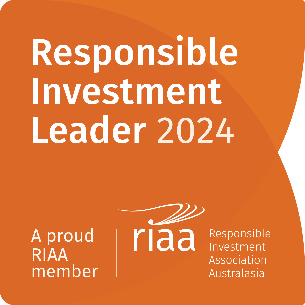The end of the bull market or an opportunity to buy?

For those investors that were hoping for a Christmas rally in equities, the gifts found under the tree this year were disappointing. In fact, in a month which is renowned for its positive performance, the US Dow Jones Index recorded its worst December since 1931 and for the first time ever, 2018 saw December deliver the worst returns of any month during the year. With headlines dominated by trade wars, a US government shut down, Brexit and the Federal Reserve shrinking its balance sheet and hiking interest rates, the Dow Jones Index finished the month down 8.7%, whilst Australian shares recorded their worst December-quarter since 2011. The question now is whether 2019 will prove that the recent volatility was a sign of worse things to come, or rather, if this has been an opportunity to buy.
For those who believe that the future is likely to be more challenging, they will also identify that alongside the recent unsettling performance in equities, credit markets have been similarly an area of concern. It is through these markets that companies and governments raise debt-funding via instruments such as investment-grade bonds and commercial paper. The value of this market is substantially larger than that for global stocks and notably it was also here that many of the problems which led to the GFC occurred. It is also this market that investors often regard as being the best indicator of the underlying health across the global economic system. Worryingly the recent signals in this area have been problematic. Transaction volumes have substantially dried up, with a number of commentators during the month highlighting similarities to November 2008. At this time during the GFC not a single company borrowed money from the $1.2tn US high-yield corporate bond market and during December investor appetite was comparable. Unfortunately this deterioration in sentiment also presents itself in pricing, with borrowing costs for companies now having risen dramatically. By way of example, the yields on the debt issued by US blue-chip companies jumped by 1% during 2018 to over 4.3%. This is the highest level seen this decade.
These dynamics warrant careful consideration. With credit spreads expanding and equities displaying an extraordinary level of volatility, investor sentiment has been challenged. Confidence in the global economic fundamentals are softening. With the US yield curve recently inverting (occurred in early December when the yield on the US 5-year Treasury fell below that of the US 2-year Treasury), bond markets are implying that growth and inflation risks now lie on the downside. This is not unexpected given that the current US cycle is now almost the longest uninterrupted expansion since 1860. This inevitable sense of cycle fatigue together with a Federal Reserve that has been tightening conditions (they have been reducing their balance sheet by $50bn per month and have now lifted interest rates 9 times since December 2015) has seen the economic headwinds strengthen. Additionally the potential for policy error in areas such as trade between the US and China is offering more fuel for the Bears out there. Unfortunately this backdrop presented itself in not just a challenging December, but rather a tough 2018 with almost all major stock exchanges finishing the year in negative territory. The US S&P500 closed the year down just over 6% whilst the Shanghai Index and the UK’s FTSE100 Index fell by 25% and 12% respectively. Commodities faced similar treatment with Copper down 20% and Crude Oil collapsing 24%.
For those investors though looking to create a more positive interpretation of the current climate it is worth highlighting that despite the macro challenges and volatility of the year just gone, not all returns were negative. US 10-year bonds for example generated a positive outcome of more than 11% whilst in the equity space it was New Zealand that again deserved acclaim.
Over the past 12-months the S&P/NZX50 Index recorded a positive return of 4.2%. Not only has this outcome been one of the best absolute performances achieved within its asset class, but as we identified in last month’s commentary it has been achieved with a lower level of volatility. This was particularly evident during December, when as other markets were experiencing extreme volatility, the NZX was significantly more stable. Over the month our local exchange observed a range in its values of less than 3% whilst the US S&P500 Index experienced a pricing range of over 17%. What this highlights again is the quality of the major constituents on our exchange, the defensive cash flows that they typically generate and the compelling (and sustainable) dividend yields that they pay. Looking forward into 2019, with economic risks evident, these characteristics should again serve investors well.
The economic recovery and the financial returns that have been enjoyed since the GFC have been extraordinary, but at this juncture we now find that there is a heightened level of disagreement amongst investors and commentators as to what the medium-term outcomes will be. Although the noise surrounding international politics and central banks seems louder than ever, the fundamentals of equity markets in general appear supportive. Post the recent weakness in these markets, valuation levels have become more attractive. The US S&P500 Index has seen its PE multiple fall to 15-times (was recently trading at 18-times), whilst in New Zealand and Australia the major indexes are now being priced at 18-times and 17-times respectively. Corporate earnings growth is slowing relative to recent history but remains at respectable positive levels, and dividend yields will continue to appeal to investor demand. This is especially the case given that global long-dated bond yields have recently fallen (the US 10-year is again trading at close to 2.7% whilst the yield on the S&P/NZX50 Index is at 4.2%).
Undoubtedly there will be plenty of macroeconomic, political and corporate news to digest over the next 12-months but investors should be rewarded for focussing their efforts on identifying investment opportunities defined by quality and value. New Zealand is likely to remain a productive environment for this approach.





